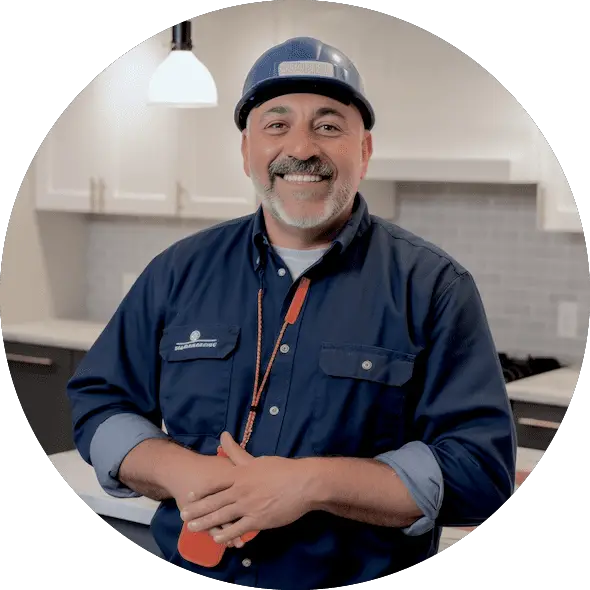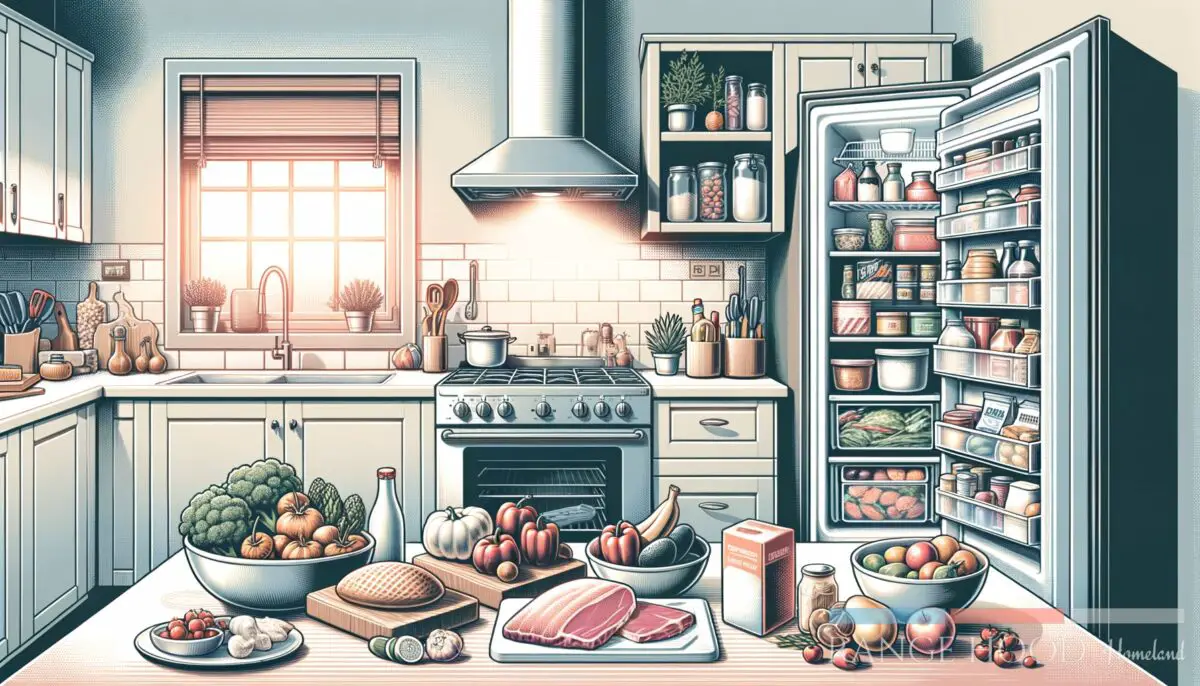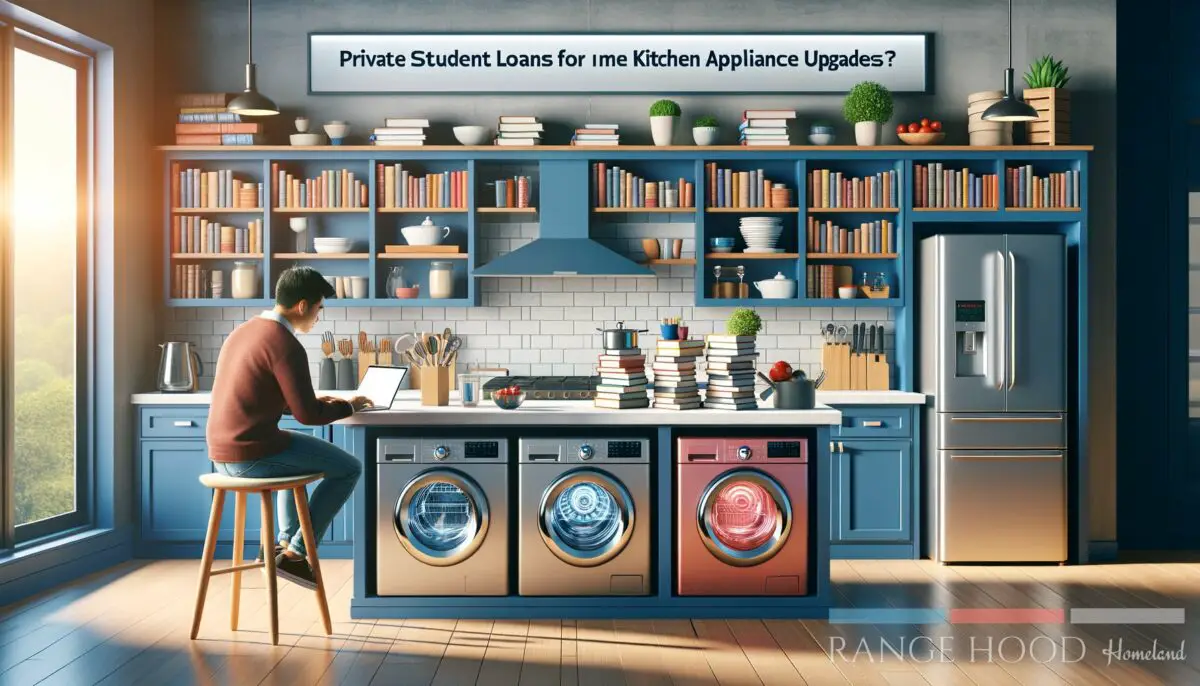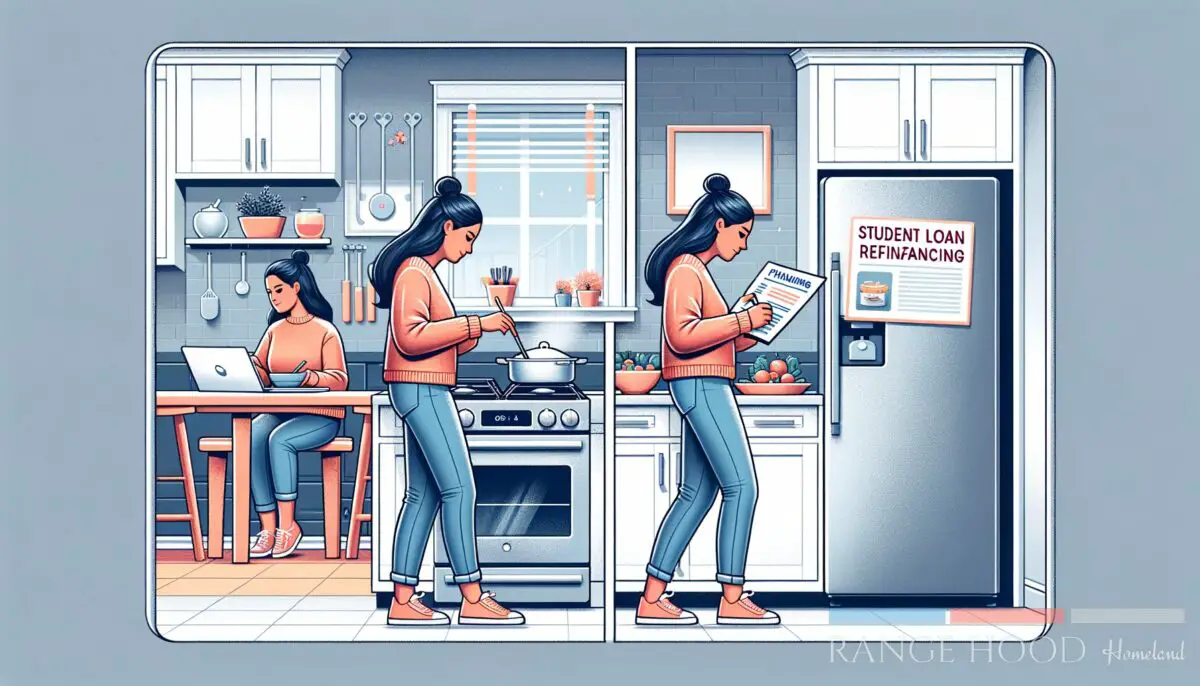A range hood is a must-have item in any kitchen. Range hoods are not only attractive, but they also serve a practical role. They’re in charge of eliminating odors, heat, and contaminants from the air in your kitchen as you cook and, ultimately, keeping your kitchen clean.
Whether you’re remodeling your kitchen or want to learn more about the different options, we’ll walk you through everything you need to know about choosing a range hood.
What is a range hood?
Range hoods remove smells, smoke, and dangerous fumes and particles from the air you breathe while cooking. The air surrounding the stove is drawn through filters or into a duct and sent out of the home.
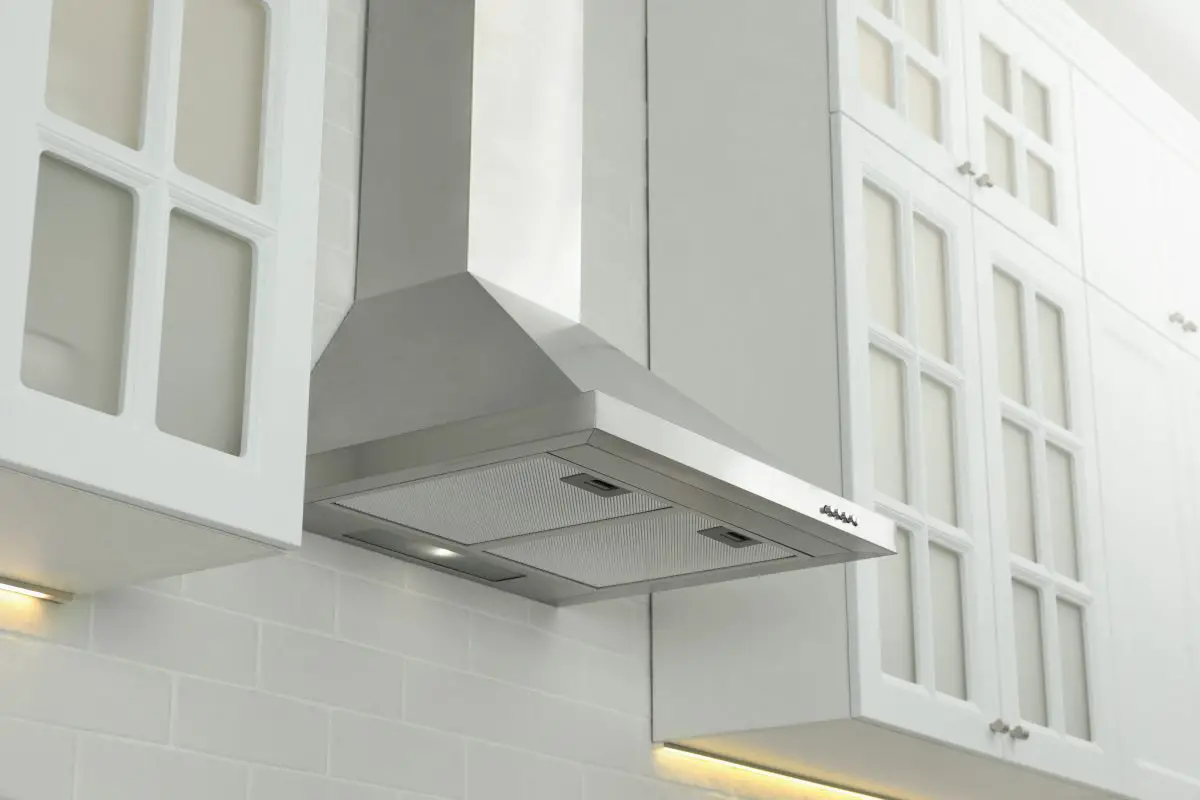
COSMO COS-63190S Wall Mount Range Hood

COSMO COS-63190S Wall Mount Range Hood
Why are range hoods important?
Range hoods are some of the most important appliances in your kitchen. They are responsible for keeping your home fresh and removing odors in the kitchen. Marketing manager for Broan-NuTone, Brian Wellnitz, says,
The home cooking process is the number one source of airborne pollutants in the house… The purpose of vent hoods is to capture smoke, odors, humidity, and heat at the source before they dissipate into the house.
Brian Wellnitz, Marketing manager for Broan-NuTone
In addition to keeping your home smelling fresh, a range hood can also:
- Provide adding additional lighting for your cooktop.
- It can help cool down your home.
- It can help prevent grease fires.
- It can increase the value of your home.
- Serve as a beautiful centerpiece for your kitchen.
What to look for when buying a range hood
While you might assume that all range hoods are the same, a few differences can affect how they work. Your needs and kitchen layout will determine which range hood is best for you. Consider asking yourself the following questions:
- What is your budget?
- Is noisle leve inpotant to you?
- What features do you want?
- Do you cook with a lot of spices? (Chinese or Indian foods)
- Do you want the hood to blend in with the kitchen or stand out?
If you are ready to shop, check out our post on the best range hoods on the market. Below are the ten things you need to consider when shopping for an insert range hood.
1. Mounting type
Range hoods come in many different types, styles, and configurations. Wall-mount, under-cabinet, island, and microwave range hoods are the most popular types of range hoods.
Wall-mount range hoods
Wall-mounted range hoods take the place of cabinets above the stove on the wall. In most cases, removing a cabinet is required to install a wall-mount range hood. The appearance and feel of your kitchen may suffer if it isn’t designed with one goal in mind.
You can, however, buy hood covers to hide the ducts and make the appliance blend in better with the rest of your kitchen. In addition, many wall-mounted range hoods have a chimney-like shape and exposed vent stacks, lending an industrial feel to your kitchen.
Under-cabinet range hoods
Under-cabinet range hoods are range hoods that are installed beneath the cabinetry. They’re smaller than wall-mount and island-mount hoods, so they’re better for smaller kitchens. They’re also typically ductless, which makes installation simple and usually doesn’t require professional help.
Islands range hoods
Large kitchens with kitchen islands typically use island hoods. They look great. However, smoke and grease have more room to spread because no barriers surround the cooking area. Thus, an island hood should be at least 6 inches wider than the cooktop for optimal ventilation.
Additionally, island range hoods put a lot of strain on the ceiling because they have no walls to support their weight. That means you should pay special attention to the bracing and load on the ceiling.
Insert range hoods
A range hood insert, also known as a “power pack,” is a type of range hood that is hidden and unseen beneath a decorative cover made of wood or copper. Range hood inserts are frequently used in the construction of custom kitchens. These hoods are designed to blend in with the rest of the kitchen and can even be installed inside cabinets.
Downdrafts range hoods
Downdraft range hoods provide quiet ventilation while keeping the kitchen looking tidy. The smoke or steam is drawn away from the cooking area and vented through ducts beneath the floor. Because they tuck under the stove when not in use, downdraft hoods are ideal for kitchens with limited overhead space.
Microwaves (OTR) range hoods
Microwave or OTR (over-the-range) hoods are range hoods attached to a microwave. Almost all over-the-range microwaves are ductless. OTR hoods typically have airflow ratings of between 300 and 400 CFM.
2. Ventilation type
The first decision you must make when shopping for a range hood is whether you want a ducted or ductless model. While ducted systems are the most common, there are also ductless and convertible options.
Ducted
Ducted (or vented) range hoods take air particles from your kitchen and exhaust them outside through ductwork. They do a good job of removing smoke and odors, but you must install ducts. Also, you should never exhaust your range hood into an attic or basement.
Consider the location of your ductwork and the vent location on the range hood. For example, some range hoods vent only at the top, while others vent from the sides or the back.
Consider installing a backdraft damper to prevent air from escaping back into the house via ductwork. Backdraft dampers are sometimes included in range hoods, or your home may already have one built into the ductwork.
Ductless
Ductless (or recirculating) range hoods filter and circulate air back into your home. They’re not as effective at removing smoke and cooking odors, but they’re much easier to set up. They have filters that must be cleaned and replaced regularly to keep them working properly. Ductless hoods are often significantly less expensive than ducted models. A ductless range hood is usually easy to install and doesn’t need to be done by a professional.
Convertible
Some buyers prefer convertible range hoods because they can be used with or without ducts. To change a ducted hood into a ductless hood, you usually have to buy a recirculating kit.
3. Size
Unless you completely rebuild your kitchen, your range hood will have to fit within specific dimensions, so hood size is critical. In general, your range hood should be at least as wide as your cooktop. Size is measured in width, so a 30-inch range hood is 30 inches wide.
Range hoods are available in a few standard sizes. Most range hoods are available in 30 inches, 36 inches, 42 inches, and 48 inches wide. However, you may also find a few as small as 24 inches, 28 inches, and as large as 54 inches and 60 inches (notice how they tend to go up by six inches).
Most range hoods on the market are 30 inches wide because the standard width of a kitchen range is 30 inches. This size is good for most kitchens, but people with larger stoves or a custom kitchen may want something bigger.
Most experts recommend a hood size larger than your range, so if your stove is 30 inches wide, get a 36-inch hood to collect all the particles that fly around while you cook.
4. Power (CFM)
CFM (cubic feet per minute)is the amount of air moved each minute. This value is determined by how “powerful” your range hood is. CFM measures the rate at which air is moved but not the efficiency with which it is removed or redistributed.
You can figure out how many CFM you’ll need for your kitchen by multiplying the BTU of your stove by 100. For example, a range hood with a minimum CFM rating of 220 is required if your stove has a BTU rating of 22,000 BTUs.
Most kitchens with electric ranges will benefit from a CFM of at least 300, while those with gas burners will benefit from a CFM of at least 800. Range hoods with CFMs of 300 to 500 will, on average, be enough for most kitchens.
5. Noise level
Range hoods can get loud. The noise level of a range hood is given in sones, but some manufacturers also list the noise level in decibels (dB). The faint volume of sound produced by your refrigerator is one sone. The average conversation volume is four sones. While cooking, any noise level less than 65 dB (or 13 sones) should be acceptable. High CFM range hoods are generally noisier.
Use the handy chart below to help you visualize sound.
| Sones | Decibels | Sound |
|---|---|---|
| 0 | 10 | Normal Breathing |
| .5 | 25 | Rustling leaves |
| 6.5 | 55 | Moderate rainfall |
| 9.5 | 60 | Normal Conversation |
| 19 | 70 | Washing Machine |
6. Filters
Filters help keep the kitchen air clean. They capture grease, smoke, odors, and other impurities. The filter is essential for optimum air recirculation in ductless range hoods. The most common filters are baffle, mesh, and charcoal filters.
Baffle filters
Baffle filters are high-efficiency filters made up of interlocking three-sided baffles that trap oil as it passes through. Stainless steel is frequently used because it is durable, easy to clean, and attractive. They can also be washed in the dishwasher. Baffle filters are more effective than mesh filters at capturing grease but are also more expensive.
Mesh filters
Mesh filters are typically made of aluminum and have multiple layers of mesh. The layers of mesh capture oil and other impurities when the range hood is turned on. They can also be washed in the dishwasher. Mesh filters have a shorter lifespan but are less expensive.
Charcoal filters
Charcoal filters are frequently used in conjunction with a baffle or mesh filter to catch impurities and neutralize odors. They’re most commonly found in recirculating ductless range hoods. When switching from a ducted to a ductless hood, compatible charcoal filters can help with odor control. Unfortunately, charcoal filters can’t be put in the dishwasher to clean them; after long use, they need to be replaced.
7. Control types
Rotary dials
These are reserved for the oldest types of range hoods. You will likely never run into these, as they are outdated. However, if you find a mode with rotary controls, I suggest looking at a different model.
Push button
Push button-type hoods are the most common because they are simple and easy to manufacture. However, these controls typically have no display to indicate what settings are on.
8. LED interface
LED buttons can show you the settings, but they don’t show you the whole picture like an LCD touchscreen monitor. They are also simple and can be controlled with push buttons.
LCD / Touch screen displays
Range hoods with LCD displays allow you to see exactly what settings are on at any moment. They are very modern and can give your kitchen a futuristic modern look. These are typically reserved for modern, more expensive range hoods. Most LCD controllers are touch screens. This means there are no buttons on the side of the god, and you must interact with the display itself.
This might sound great, but it also means a lot of greasy, stiffy substances will also find another way onto the display.
9. Lighting
Lighting sets the mood. So it’s important to choose a range hood with a light temperature that sets the ideal mood in your kitchen. Generally, warm is better. However, when looking, you might want something a little more on the cool side to properly see what you are cooking. However, warm light is more pleasant in any indoor environment, especially at night.
Consider getting a hood with dimmable lights or one where you can change the color temperature. Below are some different bulbs you will encounter when shopping for a range hood.
Halogen
A halogen lamp is an incandescent lamp with a tungsten filament that is sealed in a small, clear envelope with inert gas and a small amount of a halogen, like iodine or bromine.
LED
LED-lit range hoods save energy and require less frequent replacement, making them a better investment.
10. Features
The majority of range hoods come with additional features. Depending on the model, the unit may include one or more of the following features:
Fan speed settings
Range hoods typically have one to six fan speeds. A model with at least two speeds is preferable because it allows customers to choose between a faster cooking speed and a slower after-cooking ventilation speed. While some manufacturers tout a variety of speeds, having more than three isn’t necessary.
Smoke detector
Kitchen safety may be improved by range hoods with built-in smoke detectors. When temperature sensors pick up on unusually high heat or smoke, the fan on the range hood turns on by itself. You can also purchase an automatic smoke extinguisher that fits inside your range hood.
Delayed Auto-shutdown
After a 15-minute timer, some range hoods have an auto shut-off feature that turns off the range hood (including the blower and lights). Push the timer button as soon as you’re finished cooking
Change filer-light indicator
A light that indicates when a filter should be replaced. This is handy for those who are forgetful and can never seem to remember when they should.
11. Body Material and Aesthetic
Don’t overlook how your hood will affect your kitchen design. Range hoods are available in various materials and finishes and can serve as a decorative feature in your kitchen. Depending on your chosen design, the hood will either stand out or blend in with your cabinets and fixtures.
Stainless steel
Stainless steel range hoods are popular because they last a long time, are easy to clean, and require little maintenance. In addition, a stainless steel hood will go well with many other stainless steel kitchen appliances, tools, and cookware.
Copper
Copper has a warm, inviting, yet sophisticated appearance. It’ll look great in a modern, industrial, or farmhouse-style kitchen.
Tempered glass
Tempered glass range hoods are stylish and contemporary. In addition, the range hood may blend in with the rest of the kitchen because the glass is translucent.
Wood
Wooden range hoods have a traditional look that is ideal for traditional kitchens. While the range hood itself is not made of wood, the material that surrounds it is.
12. Budget
Now that we have covered everything, there is to cover about what factors to consider when buying a range hood. We need to talk about price. You might have the perfect range hood in mind at this point, but if you can’t afford it, it’s not likely to make its way into your kitchen anytime soon.
Installation costs
Installing a range hood may cost anywhere from $400 to $1,500, with the average cost being $750. This is the typical cost of replacing an under-cabinet hood with existing ducting.
A hidden cabinet hood with a custom cover and new ducts has the lowest cost in this range, while a wall-mounted ductless hood with an existing outlet has the highest cost. The hood, which may range from $200 to over $1,000, accounts for most of the installation cost.
Range hood prices
Below are some of the average price ranges for range hoods.
Under-cabinet range hood price
Undercabinet hoods are the most affordable range hoods on the market. A low-end 24″-36″-wide under-cabinet range hood (placed under the kitchen cabinet right over a stove or cooktop) may cost $30 to $150. Larger under-cabinet range hoods with quieter motors and better airflow may cost anywhere from $200 to $1,000, depending on size, materials, and features. A high-end under-cabinet type with features like a stainless steel finish or a variable-speed exhaust fan may cost $1,100 to$3,000 or more.
Microwave range hood prices
A microwave range hood generally costs $150 to $500. High-end microwave hoods may cost $500 to $1,500, depending on features such as a convection oven or sensor cooking controls.
Wall mount range hood prices
Depending on the size and materials, wall-mount range hoods can cost anywhere from $500 to $3,500.
Island Rangehood prices
Depending on size, materials, CFM, and design, kitchen island range hoods may cost anywhere from $600 to $1,000 for a simple model to $1,000 to $4,500 or more.
Downdraft range hood prices
A downdraft rangehood, deemed the least effective by Consumer Reports, is positioned in or below the stove and sucks smoke and pollutants down into under-floor ducting. Depending on the type, whether the cooktop is incorporated, and if the hood retracts out of sight when not in use, downdraft range hoods may cost $600 to $2,000 or more.
13. Warranty
A manufacturer warranty can come in handy if you get a faulty product or damage to a component. Most brands provide warranties. It’s critical to comprehend and read the warranty terms.
Pay attention to what the warranty covers and how long it will be valid. For example, some warranties cover mechanical damage only and not shipping, while others cover everything.
We recommend getting a range hood that has a multi-year warranty. But it is up to you to decide if a warranty is beneficial or not.
Frequently asked questions (FAQ)
Does a range hood need to vent outside?
Range hoods are not required to be vented to the outdoors. Ductless hoods are hoods that do not require ductwork. Ducted range hoods, on the other hand, are almost always preferred over ductless hoods.
How do I know how much CFM I need for a range hood?
The more heat your range generates, the more CFM your kitchen range hood requires. To calculate the CFM, multiply the total BTUs of your cooktop by the BTUs of each burner. So, if your gas range produces 60,000 BTUs, your range hood must be at least 600 CFM.
Do ductless range hoods really work
Yes. But, they are not as efficient as ventilating/ducted range hoods. This is because recirculating range hoods only filter the air through carbon filters, but they do not expel it to the outside of the home.
How much does it cost to install a range hood?
The average cost of having a range hood installed is $750. Prices vary from $400 to $1,550. To install a new hood, you must cut holes in the ceiling or change how the cabinet is built to fit the venting system.
In this pricing range, a wall-mounted ductless hood that uses an existing outlet will cost you the least, while a hidden cabinet hood that requires a custom cover and new ducts would run you the most.
Conclusion
Choosing the right range hood for your home can be a daunting task. However, we believe that once you understand what to look for, you will have no problem choosing the perfect range for your home.
This article covered what rangers are, why they are important, and how to choose the right one for your specific kitchen. Here are some key takeaways:
Key takeaways
- Check to see if you have any ductwork.
- Choose your preferred mounting type.
- Calculate the power (CFM) you need.
- Consider the balance between power and noise level.
- Choose one with the filters you want.
- Choose one with the control types you want.
- Consider additional features.
- Think about the aesthetics of the hood (style and material).
- Stick to your price range; hoods can be expensive.
- Don’t forget to factor in any Installation costs.
So, what type of range hood do you plan on getting? And did I cover everything you wanted to know? Let me know in the comments section below (I read and reply to every comment). If you found this article helpful, check out my full blog for more tips and tricks in your kitchen. Thanks for reading, and stay safe.

